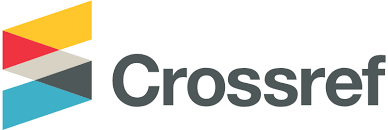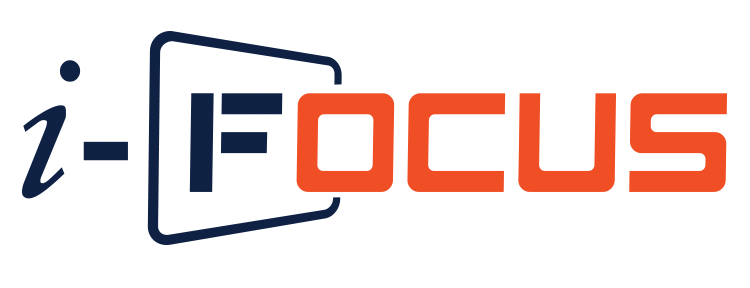Author Guidelines
General Instructions
Articles written on A4 paper (21 cm x 29.7 cm) using Font Times New Roman 10pts, with the top margin 15mm, bottom 20mm, left 20mm, and right 20 mm. Manuscripts created using Microsoft Word with a single space. For all the content, please follow the template and the writing instructions.
Writing Instructions
Abstract
The paper should begin with an abstract up to 250 words. The text of the abstract should be in 9-point size, Times New Roman and justified with single line spacing. The abstract should be composed in a single paragraph style. No formula or citation are allowed in the abstract.
Keywords
The abstract should be followed by 3-5 keywords separated by semicolon (;), ordered alphabetically.
1. Main text
All Papers must be written in English. You can use either British English or American English, but not a combination of both. Kindly use the template available to download from journal for preparing your full paper. All of text setting and formatting in the guideline can be followed to finalize the manuscript in every part. The suggested length of the paper is 6-14 pages (including figures, tables and references).
1.1. Structure
Files must be in MS Word only and should be formatted for direct printing. Figures and tables should be embedded and not supplied separately. Please make sure that you use as much as possible normal fonts in your documents. Special fonts, such as fonts used in the Far East (Japanese, Chinese, Korean, etc.) may cause problems during processing.
To avoid unnecessary errors you are strongly advised to use the ‘spellchecker’ function of MS Word. Follow this order when typing manuscripts: Title, Authors, Affiliations, Abstract, Keywords, Main text (including figures and tables), Acknowledgements, References, Appendix. Collate acknowledgements in a separate section at the end of the article and do not include them on the title page, as a footnote to the title or otherwise.
Bulleted lists may be included and should look like this:
- First point
- Second point
- And so on
1.2. Tables
All tables should be numbered with Arabic numerals. Every table should have a caption in 8-point size. Captions should be placed above tables, left justified [Note: one-line caption of length less than column width centered]. Only horizontal lines should be used within a table, to distinguish the column headings from the body of the table, and immediately above and below the table. Tables must be embedded into the text and not supplied separately. The table vertical borders should not be used while horizontal borders should be minimalized. All tables should be typed directly in the the Microsoft Word. No table in the form of an image is allowed.
1.3. Citations
Indicate references by [1] or [2, 3] or [1-3] in the order of appearance in the text. Also, all the references should be cited in the text or figure/table captions. If necessary, write the last name(s) of the cited author(s) for reference with one or two authors i.e. Strunk and White [2]. For a reference with more than two author, only last name of the first author which sould be written. i.e. Mettam et al. [3].
1.4. Section headings
Section headings should be left justified, bold, with the first letter capitalized and numbered consecutively, starting with the Introduction. Sub-section headings should be in capital and lower-case italic letters, numbered 1.1, 1.2, etc, and left justified, with second and subsequent lines indented. All headings should have a minimum of two text lines after them before a page or column break. Ensure the text area is not blank except for the last page.
1.5. General guidelines for the preparation of your text
Avoid hyphenation at the end of a line. Symbols denoting vectors and matrices should be indicated in bold type. Scalar variable names should normally be expressed using italics. Weights and measures should be expressed in SI units. All non-standard abbreviations or symbols must be defined when first mentioned, or a glossary provided.
1.6. Footnotes
Footnotes should be avoided if possible. The footnotes should be typed single spaced, and in smaller type size (8 pt), at the foot of the page in which they are mentioned, and separated from the main text by a one line space extending at the foot of the column. Please do not change the margins of the template as this can result in the footnote falling outside printing range.
2. Illustrations
All figures should be numbered with Arabic numerals (1, 2, 3, ….). Every figure should have a caption. All photographs, schemas, graphs and diagrams are to be referred to as figures. Line drawings should be good quality scans or true electronic output. Low-quality scans are not acceptable. Figures must be embedded into the text and not supplied separately. In MS word input the figures must be properly coded. Preferred format of figures are PNG, JPEG, GIF etc. Lettering and symbols should be clearly defined either in the caption or in a legend provided as part of the figure. Figures should be placed at the top or bottom of a page wherever possible, as close as possible to the first reference to them in the paper. Please ensure that all the figures are of 300 DPI resolutions as this will facilitate good output.
The figure number and caption should be typed below the illustration in 8 pt and left justified [Note: one-line captions of length less than column width (or full typesetting width or oblong) centered]. Artwork has no text along the side of it in the main body of the text. However, if two images fit next to each other, these may be placed next to each other to save space. For example, see Fig. 1. When a word “figure” is used as a subject of the sentence, use a full spelling, as “Figure 1 shows …”, but in other cases, use abbreviated form as “…, as shown in Fig. 1”.
3. Equations
Equations and formulae should be typed in Mathtype, and numbered consecutively with Arabic numerals in parentheses on the right hand side of the page (if referred to explicitly in the text). They should also be separated from the surrounding text by one space.
Acknowledgements
Acknowledgements is optional. Acknowledgements and Reference heading should be left justified, bold, with the first letter capitalized but have no numbers. Text below continues as normal.
References
References must be listed at the end of the paper. Do not begin them on a new page unless this is absolutely necessary. Authors should ensure that every reference in the text appears in the list of references and vice versa. Some examples of how your references should be listed are given below, which will allow you to assemble your reference list according to the correct format and font size.
[1] Van der Geer J, Hanraads JAJ, Lupton RA. The art of writing a scientific article. J Sci Commun 2000;163:51-9.
[2] Strunk Jr W, White EB. The elements of style. 3rd ed. New York: Macmillan; 1979.
[3] Mettam GR, Adams LB. How to prepare an electronic version of your article. In: Jones BS, Smith RZ, editors. Introduction to the electronic age. New York: E-Publishing Inc; 1999. p. 281-304.
Appendix A. An example appendix
Authors including an appendix section should do so before References section. Multiple appendices should all have headings in the style used above. They will automatically be ordered A, B, C etc. There is also the option to include a subheading within the Appendix if you wish.










